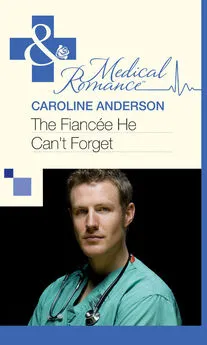Andrew Lobaczewski - Political Ponerology: A Science on the Nature of Evil Adjusted for Political Purposes
- Название:Political Ponerology: A Science on the Nature of Evil Adjusted for Political Purposes
- Автор:
- Жанр:
- Издательство:неизвестно
- Год:2006
- ISBN:нет данных
- Рейтинг:
- Избранное:Добавить в избранное
-
Отзывы:
-
Ваша оценка:
Andrew Lobaczewski - Political Ponerology: A Science on the Nature of Evil Adjusted for Political Purposes краткое содержание
Political Ponerology: A Science on the Nature of Evil Adjusted for Political Purposes - читать онлайн бесплатно полную версию (весь текст целиком)
Интервал:
Закладка:
into both dodgers and, simultaneously, intermediaries between
the oppositional society and the active ponerological group,
whom they can talk to in the appropriate language. They play
such a crucial role within this system that both sides must take
them into account. Since their technical capacities and skills
are better than those of the active pathocratic group, they as-
sume various managerial positions. Normal people see them as
persons they can approach, generally without being subjected
to pathological arrogance.
So it is that only 18% of the country’s population is in favor
of the new system of government; but concerning the layer we
have called the bourgeoisie, we may even be doubtful of the
sincerity of their attitudes. This is the situation in the author’s
homeland. This proportion can be variously estimated in other
countries, from 15% in Hungary to 21% in Bulgaria, but it is
never more than a relatively small minority.
The great majority of the population forms the society of
normal people, gradually creating an informal communications
network. It behooves us to wonder why these people reject the
advantages conformity affords, consciously preferring the op-
posing role: poverty, harassment, and curtailment of human
freedoms. What ideals motivate them? Is this merely a kind of
romanticism representing ties to tradition and religion? Still, so
many people with a religious upbringing change their world
view to that of the Pathocrats very quickly. The next chapter is
dedicated to this question.
For the moment, let us limit ourselves to stating that a per-
son with a normal human instinctive substratum, good basic
intelligence, and full faculties of critical thought would have a
226
PATHOCRACY
difficult time accepting such a compromise; it would devastate
his personality and engender neurosis. At the same time, such a
system easily distinguishes and separates him from its own
kind regardless of his sporadic hesitations. No method of
propaganda can change the nature of this macrosocial phe-
nomenon or the nature of a normal human being. They remain
foreign to each other.
The above-described subdivision into three sections should
not be identified with membership in any party, which is offi-
cially ideological but in fact pathocratic. Such a system con-
tains many normal people forced to join such a party by various
circumstances, and who must pretend as best they can to repre-
sent said party’s more reasonable adherents. After a year or two
of obtusely executed instructions, they start becoming inde-
pendent and reestablishing their severed ties to society. Their
former friends begin to get the gist of their double game. This
is the situation of large numbers of the adherents of the former
ideology, which is now fulfilling its changed function. They are
also the first to protest that this system does not truly represent
their old political beliefs. We must also remember that spe-
cially trusted people, whose loyalty to the pathocracy is a fore-
gone conclusion due to their psychological nature and the
functions they perform, have no need to belong to the party;
they stand above it .
After a typical pathocratic structure has been formed, the
population is effectively divided – polarized - according to
completely different lines from what someone raised outside
the purview of this phenomenon might imagine, and in a man-
ner whose actual conditions are also impossible to comprehend
for someone lacking essential specialized training. However, an
intuitive sense for these causes gradually forms among the
majority of society in a country affected by the phenomenon. A
person raised in a normal man’s system is accustomed since
childhood to seeing economic and ideological problems in the
foreground, possibly also the results of social injustice. Such
concepts have proved illusory and ineffective in a most tragic
manner: the macrosocial phenomenon has its own properties
and laws which can only be studied and comprehended within
the appropriate categories.
POLITICAL PONEROLOGY
227
However, in leaving behind our old natural method of com-
prehension and learning to track the internal causality of the
phenomenon, we marvel at the surprising exactness with which
the latter turns out to be subjected to its own regular laws. With
regard to individuals, there is always a greater scope of some
individualism and environmental influences. In statistical
analyses these variable factors disappear and the essential con-
stant characteristics surface. The entirety is thus clearly subject
to causative determination. This explains the relative ease of
transition from studying causation to predicting future changes
in the phenomenon. In time, the adequacy of collected knowl-
edge has been confirmed by the accuracy of these predictions.
Let us now take individual cases into consideration. For in-
stance: we meet two people whose behavior makes us suspect
they are psychopaths, but their attitudes to the pathocratic sys-
tem are quite different; the first is affirmative, the second pain-
fully critical. Studies on the basis of tests detecting brain tissue
damage will indicate such pathology in the second person, but
not in the first; in the second case we are dealing with behavior
which may be strongly reminiscent of psychopathy, but the
substratum is different.
If a carrier of an essential psychopathy gene was a member
of the decidedly anti-communist government party before the
war, he will be treated as an “ideological enemy” during the
pathocracy’s formative period. However, he soon appears to
find a modus vivendi with the new authorities and enjoys a
certain amount of tolerance. The moment when he becomes
transformed into an adherent of the new “ideology” and finds
the way back to the ruling party is only a matter of time and
circumstance.
If the family of a typical zealous pathocrat produces a son
who does not inherit the appropriate gene, thanks to a happy
genetic coincidence, (or he was born from a bio-
psychologically normal partner), such a son will be raised in
the corresponding youth organization, faithful to the ideology
and the party, which he joins early. By mature manhood, how-
ever, he will begin to list toward the society of normal people.
The opposition, that world which feels and thinks normally,
becomes ever closer to him; therein he finds himself and a set
228
PATHOCRACY
of values unknown – yet familiar - to him. A conflict eventu-
ally arises between himself and his family, party, and environ-
ment, under conditions which may be more or less dramatic.
This starts out with critical statements and the writing of rather
naive appeals requesting changes in the party, in the direction
of healthy common sense, of course. Such people then finally
begin to do battle on society’s side, enduring sacrifices and
suffering. Others decide to abandon their native country and
wander foreign lands, lonely among people who cannot under-
stand them or the problems under which they were raised.
With regard to the phenomenon as whole, one can predict
its primary properties and processes of change and estimate the
time at which they will occur. Regardless of its genesis, no
pathocratic activation of the population of a country affected by
this phenomenon can exceed the above discussed boundaries
set by biological factors.
The phenomenon will develop according to the patterns we
have already described, gnawing ever deeper into the country’s
social fabric. The resulting pathocratic monoparty will bifur-
cate from the very outset: one wing is consistently pathological
and earns nicknames such as “doctrinarian”, “hard-headed”,
“beton”, etc. The second is considered more liberal, and in fact
this is where the reverberation of the original ideology remains
alive for the longest. The representatives of this second wing
try as hard as their shrinking powers permit to bend this strange
reality into a direction more amenable to human reason, and
they do not lose complete touch with society’s links. The first
internal crisis of weakness occurs some ten years after such a
system has emerged; as a result, the society of normal people
gains a bit more freedom. During this time frame, skillful out-
side action can already count on internal cooperation.
Pathocracy corrodes the entire social organism, wasting its
skills and power.
The effects of the more ideational wing of the party and its
enlivening influence upon the workings of the entire country
gradually weaken. Typical pathocrats take over all the manage-
rial functions in a totally destroyed structure of a nation. Such a
state must be short-term, since no ideology can vivify it. The
time comes when the common masses of people want to live
POLITICAL PONEROLOGY
229
like human beings again and the system can no longer resist.
There will be no great counter-revolution; a more or less
stormy process of regeneration will instead ensue.
Pathocracy is even less of a socioeconomic system than a
social structure or political system. It is a macrosocial disease
process affecting entire nations and running the course of its
characteristic pathodynamic properties. The phenomenon
changes too quickly in time for us to be able to comprehend it
in categories which would imply a certain stability, not ruling
out the evolutionary processes to which social systems are
subject. Any way of comprehending the phenomenon by im-
puting certain enduring properties to it thus quickly causes us
to lose sight of its current contents. The dynamics of transfor-
mation in time is part of the nature of the phenomenon; we
cannot possibly achieve comprehension from outside its pa-
rameters.
As long as we keep using methods of comprehending this
pathological phenomenon, which apply certain political doc-
trines whose contents are heterogeneous with regard to its true
nature, we will not be able to identify the causes and properties
of the disease. A prepared ideology will be able to cloak the
essential qualities from the minds of scientists, politicians, and
common people. In such a state of affairs, we will never elabo-
rate any causatively active methods which could stifle the phe-
nomenon’s pathological self-reproduction or its expansionist
external influences. Ignota nulla curatio morbi !
However, once we understand a disease’s etiological factors
and their activities as well as the pathodynamics of its changes,
we find that the search for a curative method generally be-
comes much easier. Something similar applies with regard to
the macrosocial pathological phenomenon discussed above.
CHAPTER VI
NORMAL PEOPLE
UNDER PATHOCRATIC RULE
As adduced above, the anomaly distinguished as essential
Читать дальшеИнтервал:
Закладка:










